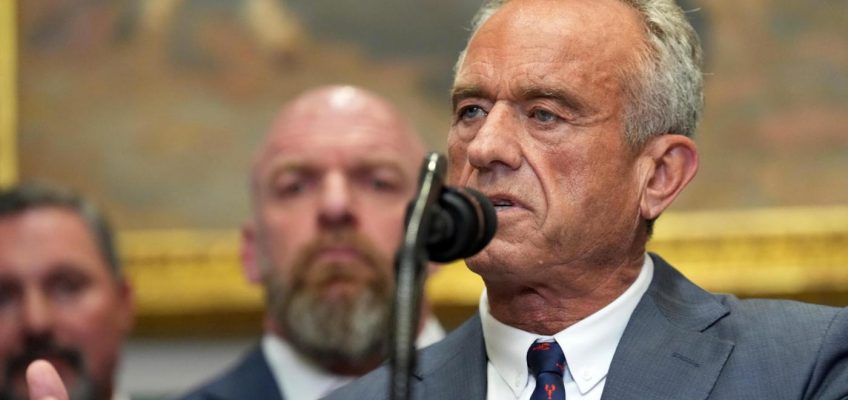By BEN FINLEY
A U.S. magistrate judge is expected to order the release of Kilmar Abrego Garcia from a Tennessee jail Friday while he awaits trial on federal human smuggling charges.
Supreme Court lets Trump administration cut $783 million of research funding in anti-DEI push
Vance pitches Trump’s sweeping new law as a ‘working families’ tax cut’ in swing-state Georgia
Trump blames renewable energy for rising electricity prices. Experts point elsewhere
Judge says former Trump lawyer Alina Habba has been unlawfully serving as US attorney in New Jersey
Trump administration reviewing all 55M people with US visas for potential deportable violations
The release will provide the closest thing to freedom Abrego Garcia has felt since he was wrongfully deported to a notorious El Salvador prison in March, making him a face — if not the face — of President Donald Trump’s hardline immigration policies.
Abrego Garcia’s lawyers stated in a court filings Tuesday that a private security firm will take Abrego Garcia from Tennessee to Maryland when he’s freed.
But Abrego Garcia’s liberty before trial could be short-lived. U.S. Immigration and Customs Enforcement may detain him once he arrives in his adopted state of Maryland and could try to deport him again.
Depending on who’s telling his story, there are two very different versions of Abrego Garcia.
Trump and his administration cast him as an MS-13 gang member and a tireless smuggler of migrants across the country. Abrego Garcia’s attorneys portray him as a family man and construction worker who was arbitrarily deported and then vindictively charged to save political face.
As Abrego Garcia’s story takes yet another turn, here’s what to know:
‘Well-founded fear’
Abrego Garcia, 30, grew up in El Salvador and fled at 16 because a local gang extorted and terrorized his family, court records state. He traveled to Maryland, where his brother lives as a U.S. citizen, but was not authorized to stay.
Abrego Garcia found work in construction and met his future wife, Jennifer Vasquez Sura. In 2018, he moved in with her and her two children after she became pregnant with his child. They lived in Prince George’s County, just outside Washington.
In March 2019, Abrego Garcia went to a Home Depot seeking work as a laborer when he and three other men were detained by local police, court records state. They were suspected of being in MS-13 based on tattoos and clothing.
A criminal informant told police that Abrego Garcia was in MS-13, court records state, but police did not charge him and turned him over to ICE.
A U.S. immigration judge denied Abrego Garcia’s subsequent asylum claim because more than a year had passed since his arrival. But the judge granted him protection from being deported back to El Salvador, determining that he had a “well-founded fear” of gang persecution there, court records state.
Abrego Garcia was released and placed under federal supervision. He received a federal work permit and checked in with ICE each year, his lawyers said. He joined a union and was employed full-time as a sheet metal apprentice.
‘Audacity to fight back’
In February, the Trump administration designated MS-13 as a foreign terrorist organization. In March, it deported Abrego Garcia to the prison in El Salvador, violating the U.S. immigration judge’s 2019 order.
Abrego Garcia later claimed in court documents that he was beaten and psychologically tortured, while El Salvador President Nayib Bukele denied the allegations.
The Trump administration described its violation of the immigration judge’s 2019 order as an administrative error. Trump and other officials also doubled down on claims Abrego Garcia was in MS-13.
Vasquez Sura filed a lawsuit to bring her husband back. Following mounting political pressure and a Supreme Court order, the Trump administration returned Abrego Garcia to the U.S. in early June. But it was to face the human smuggling charges.
The smuggling case stems from a 2022 traffic stop for speeding, during which Abrego Garcia was driving a vehicle with nine passengers. Police in Tennessee suspected human smuggling, but he was allowed to drive on and wasn’t charged with anything.
Abrego Garcia has pleaded not guilty to the smuggling charges filed in June. The case relies on the testimony of cooperating witnesses, some of whom have requested or received help with immigration and criminal matters, according to pre-trial testimony.
Abrego Garcia’s lawyers on Tuesday filed a rarely used motion to dismiss the case based on “vindictive and selective prosecution.”
“This case results from the government’s concerted effort to punish him for having the audacity to fight back,” his lawyers wrote.
The government’s response is due in court by Tuesday.
Deportation fears realized
U.S. Magistrate Barbara Holmes in Nashville ruled in June that Abrego Garcia has a right to be released from jail while he awaits trial, determining that he’s not a flight risk or danger to the community.
Holmes discussed at a court hearing conditions of release that would require Abrego Garcia to stay with his brother in Maryland. He would also have electronic monitoring and be placed on home detention.
But Abrego Garcia has remained in jail at his attorneys’ request for about 11 weeks over fears that ICE would immediately try to deport him. Those fears were confirmed in federal court in Maryland, where Abrego Garcia’s wife is suing the Trump administration.
Thomas Giles, an assistant director for ICE, testified last month that Abrego Garcia would be detained as soon as he’s freed. He added that Mexico or South Sudan may be willing to accept Abrego Garcia, but the Trump administration hadn’t decided on anything yet.
U.S. officials have argued that Abrego Garcia can be deported because he came to the U.S. illegally and because a U.S. immigration judge deemed him eligible for expulsion in 2019, just not to his native El Salvador.
Judge provides some protections
Despite the fears of deportation, Abrego Garcia’s attorneys have asked Holmes to finally release him from jail in Tennessee. A stay of release that they had requested expires Friday.
In a filing Thursday, Holmes wrote that she will enter an order regarding Abrego Garcia’s pretrial release on conditions. The order was not published as of Thursday afternoon.
Abrego Garcia’s expected release comes after a federal judge in Maryland provided some protections for him.
U.S. District Judge Paula Xinis, who is overseeing the lawsuit, has prohibited ICE from immediately detaining Abrego Garcia when he’s released in Tennessee.
In a late July order, Xinis required that any removal proceedings begin in Baltimore. That’s where they should have begun when the Trump administration wrongfully deported him to El Salvador, Xinis wrote.
Xinis also ordered that ICE provide three business days notice if it intends to initiate removal proceedings. The time will give Abrego Garcia and his attorneys the opportunity to raise any credible fears of persecution or torture in the country to which ICE plans to send him.
Xinis wrote that the Trump administration has “done little to assure the Court that absent intervention, Abrego Garcia’s due process rights will be protected.”
If ICE wanted to return him to El Salvador, it would have to reopen his 2019 case before an immigration judge, Xinis wrote. And that would require formal notice and “an opportunity to be heard.”
Xinis acknowledged that Abrego Garcia may be ordered to appear in Baltimore for immigration proceedings, which “may or may not include lawful arrest, detention and eventual removal.
“So long as such actions are taken within the bounds of the Constitution and applicable statutes, this Court will have nothing further to say,” Xinis wrote.




